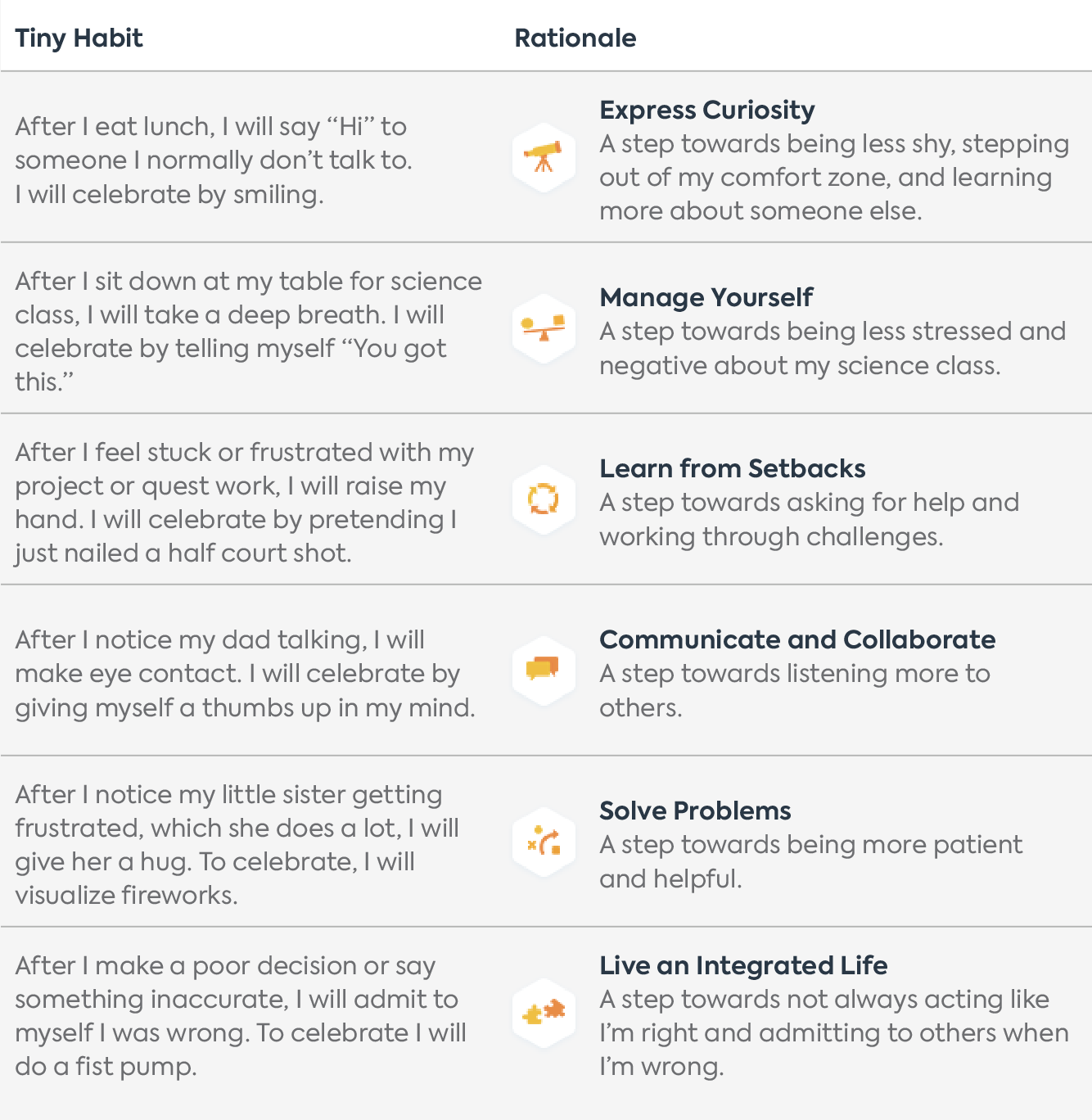Want to change? Start with Tiny Habits.
I recently read a book called Tiny Habits: The Small Changes That Change Everything by BJ Fogg, PhD. Fogg, founder of the Behavior Design Lab at Stanford University, describes a new behavior design model that can help people change behaviors and create new positive habits. I found the book to be helpful personally in my own quest to improve, but also in supporting Quest Forward students in cultivating the Essential Habits. The book is also enjoyable, at times funny, and easy to read — you don’t need any special training to read it and start creating new positive habits.
According to Fogg, when it comes to changing our habits the “go big or go home” attitude doesn’t get us far. For example, people rarely stick to New Year’s resolutions to exercise an hour a day, lose weight, or stop using our phones so much. But, why? Why is it so hard? For starters, we put a lot of pressure on ourselves to change. We set expectations too high and are too hard on ourselves when we don’t change instantly. This leads us to feeling frustrated and disappointed, and sometimes hopeless that we’ll ever be able to change.
One phrase from the book that stuck out to me is:
“I change best by feeling good, not by feeling bad.”
Making life-long changes requires patience, self-compassion, and lots of celebrations. Taking small steps with “tiny habits,” behaviors that take less than 30 seconds to complete, is manageable. It is a quick way to make changes that stick and make you feel good about your ability to change, thus leading to more positive changes. Because they don’t take much time or willpower, you can start now and build on them over time. Tiny habits are like keys that unlock more good habits.
Fogg describes three components of every good tiny habit:
- Anchor Moments: Anchor moments are existing routines or events, like brushing your teeth or sitting down at your desk every morning. These anchor moments remind you to do the new behavior.
- New Tiny Behavior: A new tiny behavior is a really simple version of the new habit you want. If you want to meditate every day, a tiny habit might be to take a deep breath. If you want to floss every day, a tiny habit might be flossing one tooth. It sounds weird, but it’s pretty easy to floss one tooth. Create the habit and you can build on it over time.
- Instant Celebration: An instant celebration is something you do to feel good and creative positive emotions. This might be a smile, a head nod, visualizing fireworks going off, or giving yourself a thumbs up.
In creating new tiny habits, you should include all three components. Don’t leave out the celebrations! It may sound corny, but those celebrations can help rewire your brain. Plus, they’ll also make you feel good about your progress. In Fogg’s book he refers to “Tiny Habit Recipes” that are useful for creating your own tiny habits. (You can download recipe cards for free on his website.)
To help make this all a little more concrete I’ve put together examples of recipes that can help students cultivate the Quest Forward Essential Habits.

What new habits do you want? Identify a few tiny habit recipes and try them out. It might take some trial and error to find the most effective tiny behaviors, anchors, and celebrations. Have fun with it! The more you enjoy the tiny habits and actually want to do the behaviors and celebrations, the more likely you are to stick with it.
